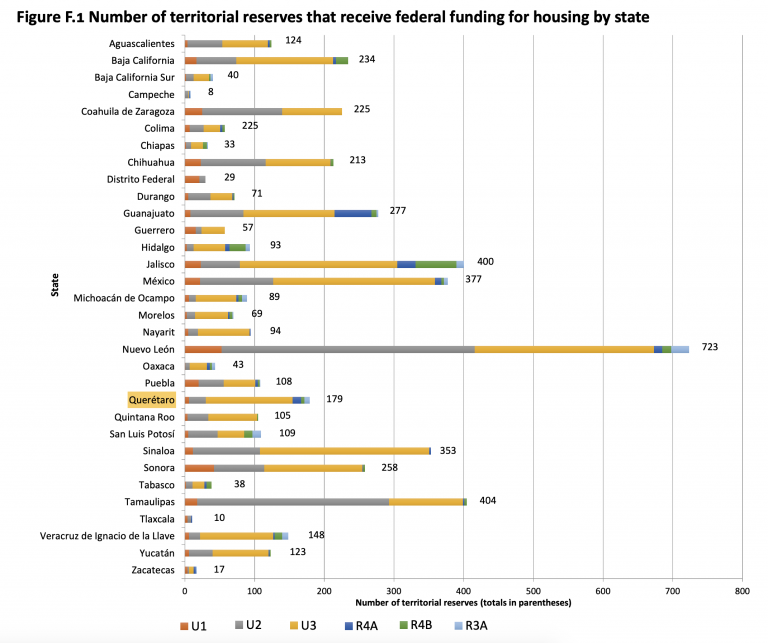Housing is a strategic sector for the economic growth and social development of Mexico since it triggers investment, creates jobs, strengthens the local market, and improves the quality of life of Mexican families.
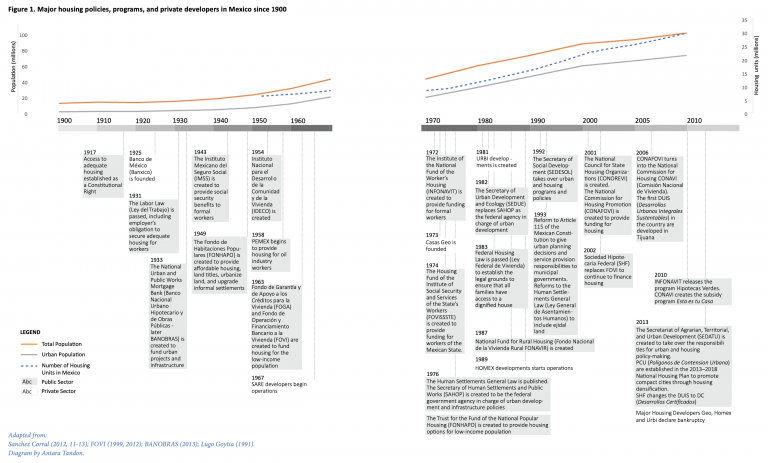
Apartment Cost
City Center:
1BR = 5,970 MXN (Low = 4,500 MXN, High = 12,000 MXN)
3BR = 13,000 MXN (Low = 10,000 MXN, High = 18,000 MXN)
Outside Center:
1BR = 3,811 MXN (Low = 3,000 MXN; High = 5,000 MXN)
3BR = 9,085 MXN (Low = 7,000 MXN; High = 15,000 MXN)
Four-person family monthly costs: 1,448.77 USD (33,656 MXN) without rent.
A single person monthly costs: 398.96 USD (9,268.18MXN) without rent.
Cost of living ranks 417th out of 484 cities in the world.
Source: Nubeo
The quality of living in Queretaro is exceptionally high. It’s an unbelievable safe city (more safe than most US cities), has a great private education system, fantastic and affordable healthcare, and the economy is one of the strongest in Mexico.
Due to all of these factors, there is a large influx of both international and domestic residents moving to the city. The government stating it is around 10%. With any city, that amount of population growth is going to affect the quality of living somewhat. Therefore, it is obvious outcome of the increase in traffic and the increase in property values (and rent). However, Queretaro is still much more affordable than Mexico City or comparable US/Canadian cities.
Cost of living index in Queretaro is 69.88% lower than in New York.
Income Level
The Average Monthly Salary is…
31,000 MXN (Low = 4,190 MXN; High = 137,000 MXN)
1,391.03 USD (Low = 188 USD; High = 6,147 USD)
Source: Salary Explorer
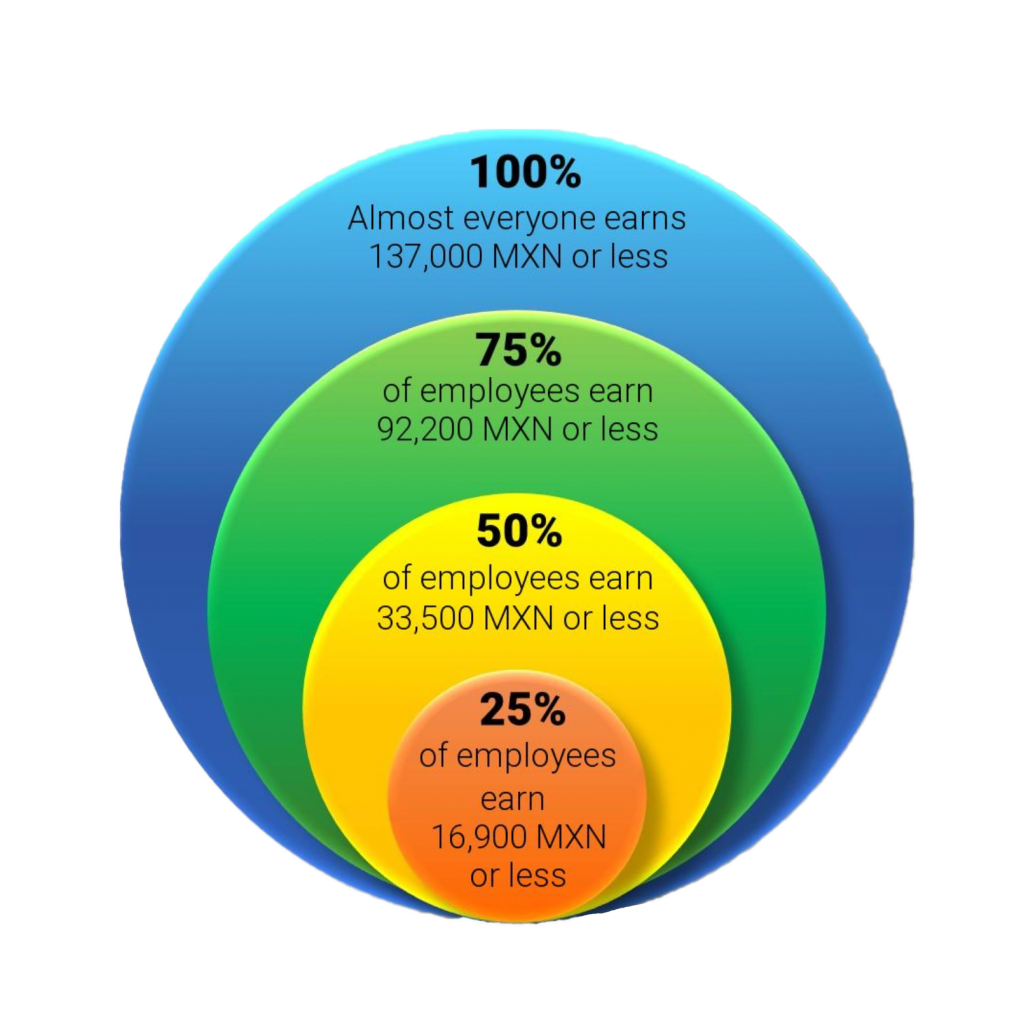
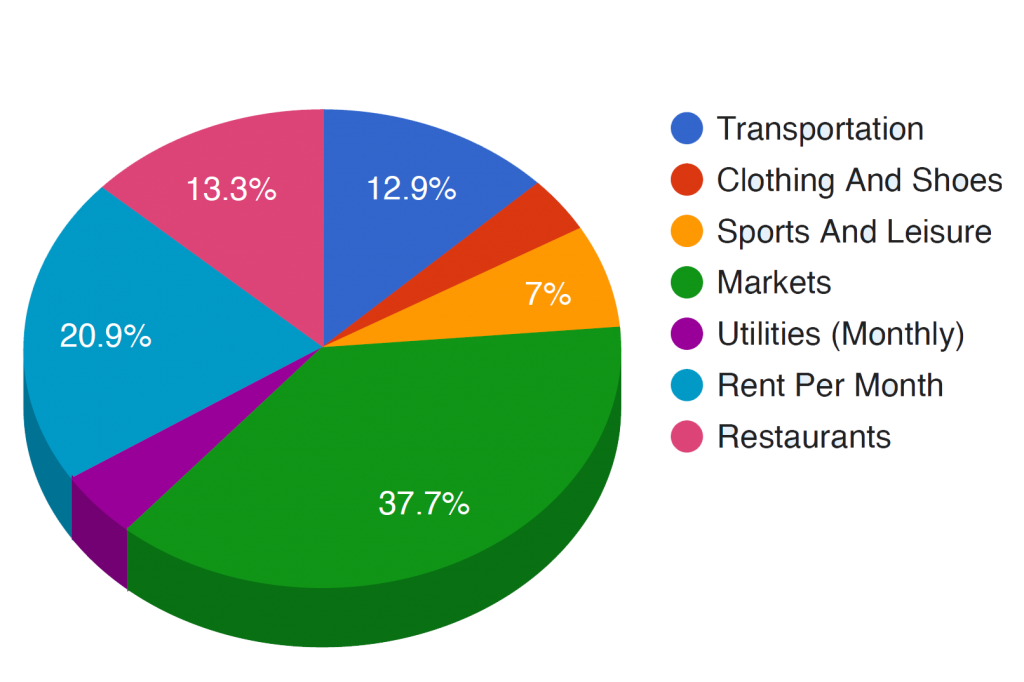
Well-being Stats
Queretaro exceeds the national average in nine well-being dimensions but lags behind in jobs, environment and work-life balance. The state has one of the lowest homicide rates and the highest degree of trust in the judicial system, which drive the strong performance in the safety dimension.
Housing and health improved in Queretaro more than the national average in the period 2000-13, as well as education in the past six years. However, the state’s performance worsened in the dimensions of income and work life-balance.
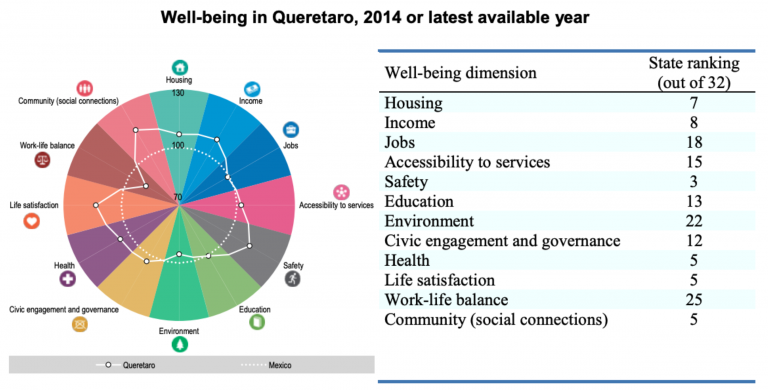
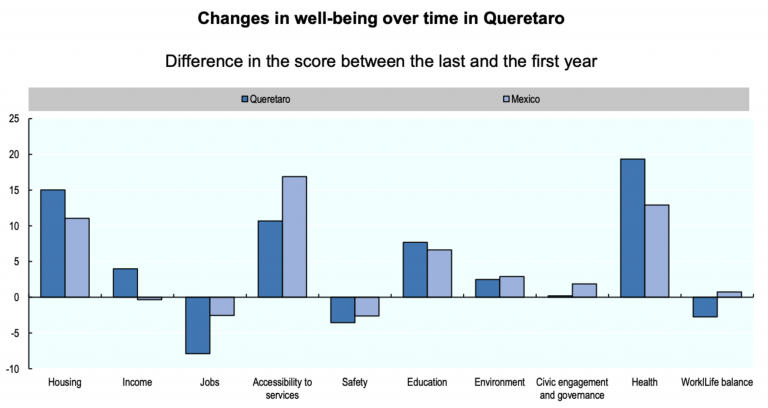
Affordable Housing
President EPN & the INFOMAVIT
Enrique Peña Nieto (EPN), Mexico’s president from 2012-2018, voiced strong support for extending the social mission of Instituto del Fondo Nacional de la Vivienda para los Trabajadores (INFOMAVIT) – the largest mortgage lender in Mexico – to embrace quality of life metrics. He also indicated a strong interest in expanding housing opportunities to segments of the population who are currently not being served by the housing funds and banks to the extent that the right to a dignified home is enshrined in Mexico’s Constitution.
In order to continue giving greater importance to quality of life metrics and not just lending volumes, INFONAVIT strategy will focus on the creation of cities that are more efficiently organized and less segregated in an unprecedented effort to move towards an inclusive, prosperous Mexico on the basis of orderly and sustainable urban development. INFONAVITs 2013-2022 financial plan projected cash flow growth of 8.82 % CAGR and its strategic agenda focused on four dimensions:
1. Housing needs: providing funding and housing solutions that enhance the welfare of workers;
2. Social balance: ensuring housing quality and sustainability and promoting urban planning with a focus on employment growth
3. Scope of policies: expanding connections with other housing institutions and aligning programs and policies with strategic sector guidelines
4. Risk & Return: sustaining strong financial and operational performance.
The process of urban development is incremental for low-income households in Mexico since a significant percentage of the population has no possibility of living in dwellings constructed by the formal sector. Mexico is currently facing significant challenges in its future housing requirements.The three different proposals that complement the vision of President EPN and that could enhance the affordable housing sector in Mexico in order to create a better future for local residents. The proposals are:
1. Creation of affordable Mexican edge cities
2. Exploration of the Section 8 tenant-based housing voucher program practiced in the United States
3. Use of housing development as a regional development tool coupled with an industrial policy to rescue the Mexican southern region from deep-rooted stagnation and to potentiate the multiplier effect on the economy.
Challenge
The housing market is currently facing a significant challenge in regards to meeting the growing housing deficit of about 9 million units. In 2030, government-estimated housing needs for household formation amount to 16.8 million. Mexico will need to provide about 26 million housing units by 2030, representing an annual demand of about 1.3 million housing units. In order for the local government to address population dynamics, the government plans to promote a million actions that include the creation of plots of land, construction, expansion, and home improvement, both in the countryside and in cities; more than 500,000 of these actions correspond to new constructions.
The new national housing policy is intended to promote public-private efforts over the next few years; it uses a model that incentivizes an orderly and sustainable development of the housing sector. These efforts are intended improve and regularize urban and rural housing.
Urban Containment Boundaries (Perímetros de Contención Urbana, or PCU)
DENSIFYING EXISTING AREA
The signature strategy of the new national housing and urban development policy is to create urban containment boundaries (Perímetros de Contención Urbana, or PCU) around each metropolitan area in Mexico and encourage much more development in existing areas (called infill development). These urban containment boundaries (PCUs), developed by the National Housing Commission (CONAVI), are a policy tool of the Federal Government to identify where to subsidize housing so it is located within access to jobs, services, and infrastructure.
U1- Intraurban: Defined with the variable of proximity to employment, defined as the physical distance to jobs in a given geographic unit.
U2 – First boundary or areas in the process of consolidation: Areas with water and sewage service coverage greater than or equal to 75%.
U3 – Second boundary or contiguous urban areas: These areas are located next to U2s in a buffer defined according to the size of the city.
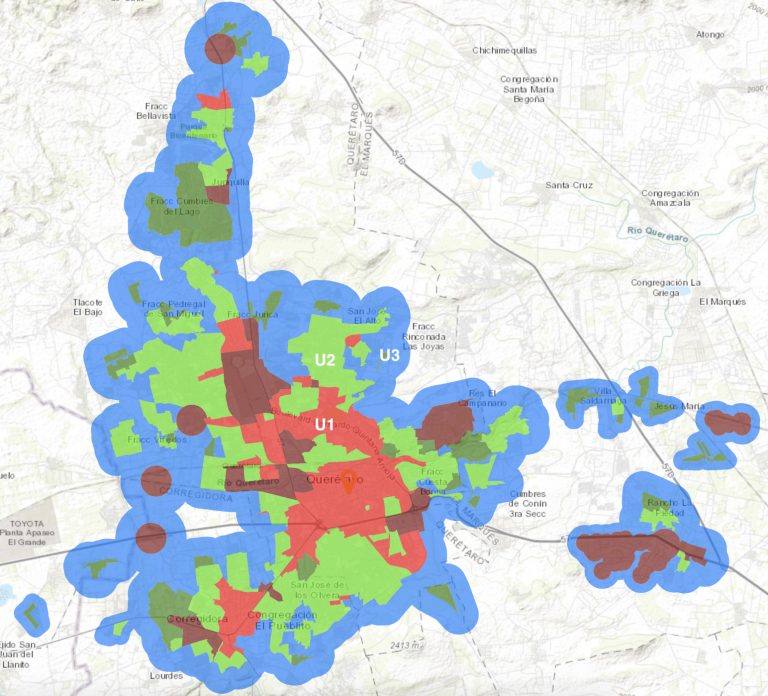
The section on densification places this strategy in a wider context of international approaches that increase densities of metropolitan areas. Such policies are beneficial overall—saving land, using infrastructure efficiently, and making dynamic urban places. However, they take time to implement. Densification plans need complementary programs and policies to ensure denser areas are well-located, maintain sufficient land supply, simplify the urban infill process, and foster infill at a range of scales from single units to larger developments. Such programs require substantial coordination between government agencies.
Source: Mapa; Revitalizing Places: Improving Housing and Neighborhoods from Block to Metropolis
